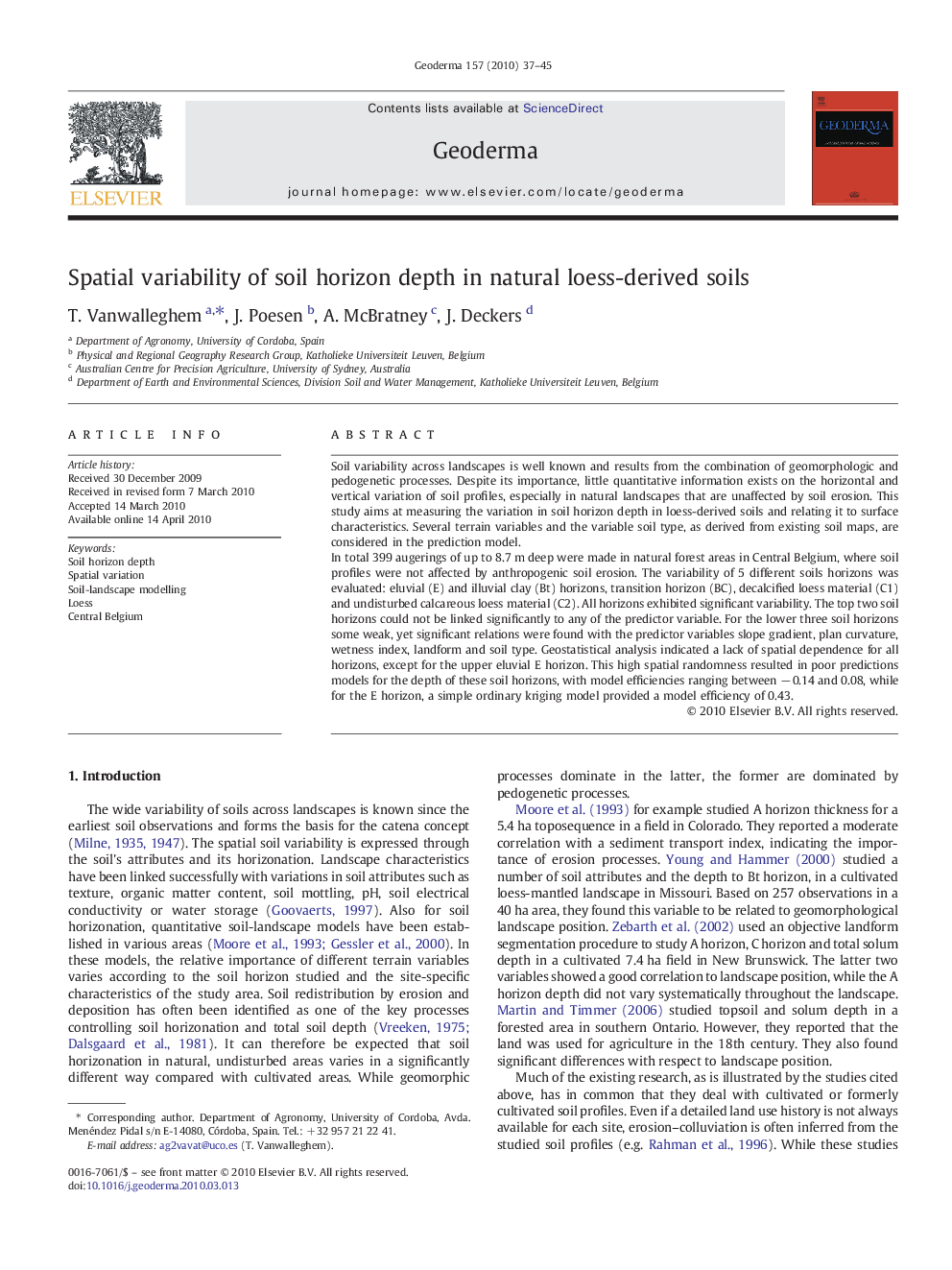| Article ID | Journal | Published Year | Pages | File Type |
|---|---|---|---|---|
| 4574798 | Geoderma | 2010 | 9 Pages |
Soil variability across landscapes is well known and results from the combination of geomorphologic and pedogenetic processes. Despite its importance, little quantitative information exists on the horizontal and vertical variation of soil profiles, especially in natural landscapes that are unaffected by soil erosion. This study aims at measuring the variation in soil horizon depth in loess-derived soils and relating it to surface characteristics. Several terrain variables and the variable soil type, as derived from existing soil maps, are considered in the prediction model.In total 399 augerings of up to 8.7 m deep were made in natural forest areas in Central Belgium, where soil profiles were not affected by anthropogenic soil erosion. The variability of 5 different soils horizons was evaluated: eluvial (E) and illuvial clay (Bt) horizons, transition horizon (BC), decalcified loess material (C1) and undisturbed calcareous loess material (C2). All horizons exhibited significant variability. The top two soil horizons could not be linked significantly to any of the predictor variable. For the lower three soil horizons some weak, yet significant relations were found with the predictor variables slope gradient, plan curvature, wetness index, landform and soil type. Geostatistical analysis indicated a lack of spatial dependence for all horizons, except for the upper eluvial E horizon. This high spatial randomness resulted in poor predictions models for the depth of these soil horizons, with model efficiencies ranging between − 0.14 and 0.08, while for the E horizon, a simple ordinary kriging model provided a model efficiency of 0.43.
